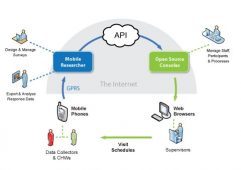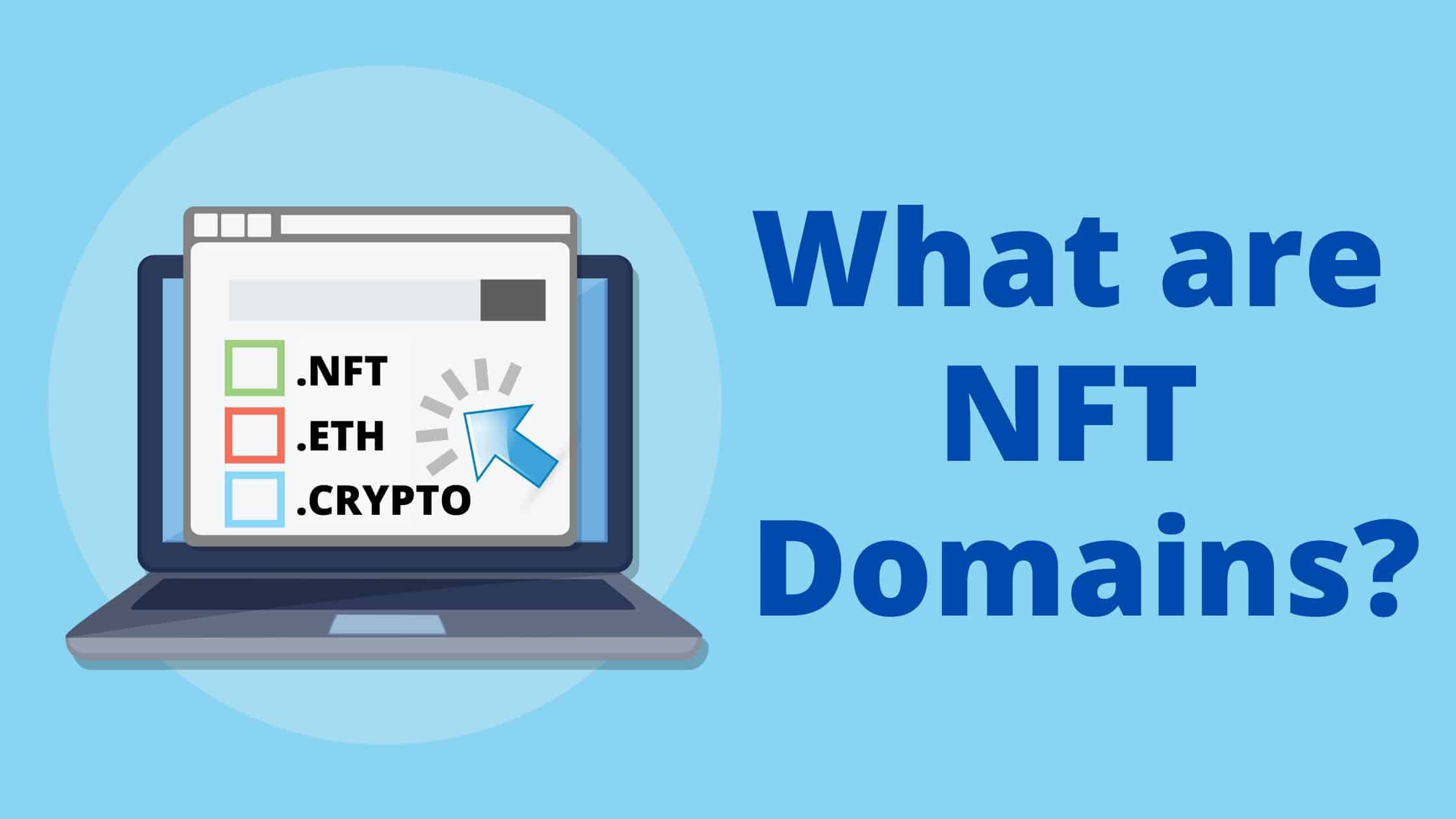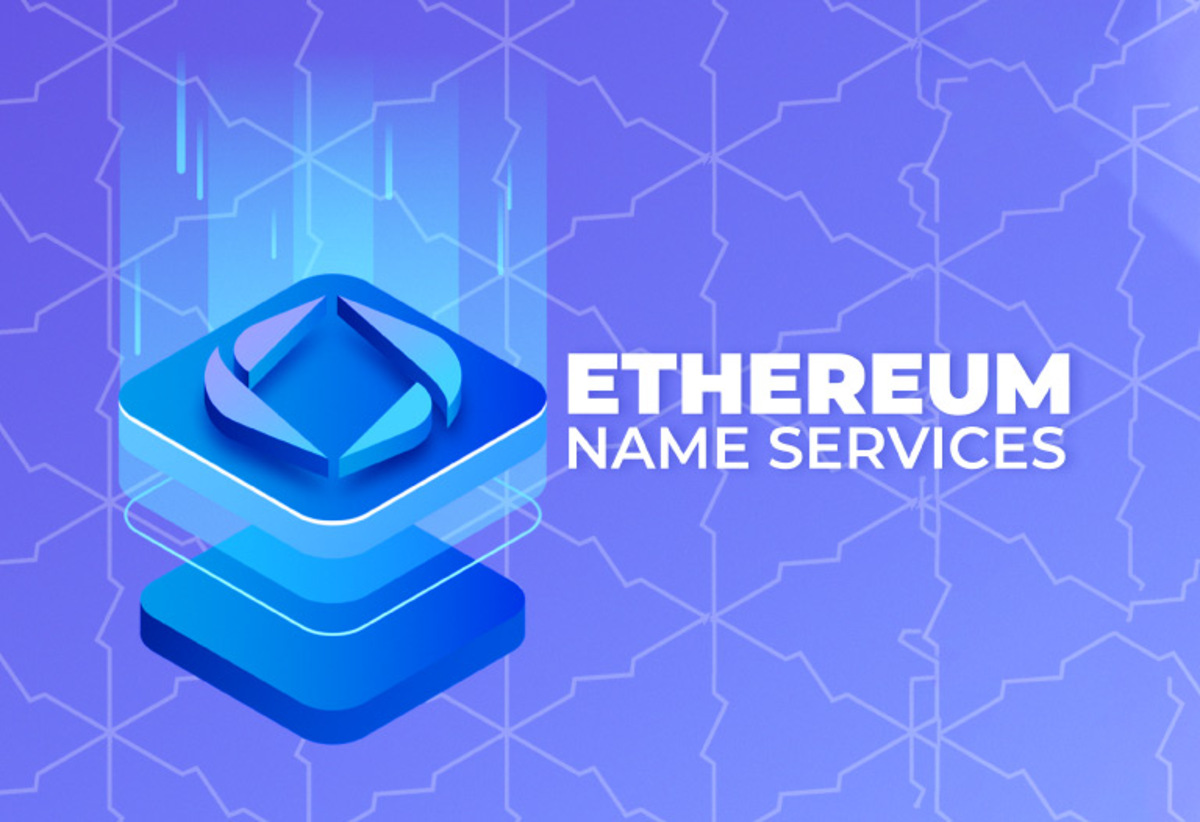Introduction
Blockchain technology has gained significant traction in recent years, revolutionizing various industries and presenting new opportunities for innovation. As a result, many businesses are looking to build their own blockchain websites to leverage the advantages this technology offers.
However, building a blockchain website requires specific knowledge and expertise. It involves understanding the basics of blockchain technology, choosing the right platform, and setting up a development environment. Additionally, designing the architecture, creating smart contracts, and integrating front-end frameworks are crucial steps in the process.
In this article, we will guide you through the essential steps of building a blockchain website. From understanding the fundamentals of blockchain technology to deploying and maintaining your website, we will cover everything you need to know to get started.
Whether you are a developer looking to expand your skillset or a business owner seeking to explore the benefits of blockchain, this guide will provide you with the necessary insights to embark on your blockchain website journey.
It is important to note that building a blockchain website requires a solid understanding of HTML, CSS, and JavaScript. Additionally, familiarity with blockchain platforms such as Ethereum, Hyperledger, or Corda is advantageous.
Now, let’s dive into the details and learn how to build a compelling and functional blockchain website.
Understanding the Basics of Blockchain Technology
Before diving into the process of building a blockchain website, it’s important to have a solid understanding of the underlying technology. At its core, a blockchain is a distributed ledger that enables secure and transparent transactions between parties without the need for intermediaries.
A blockchain consists of a series of blocks, each containing a list of transactions. These blocks are linked together in a chronological order, forming a chain. One of the key features of blockchain technology is its immutability, meaning once a transaction is recorded on the blockchain, it cannot be altered or tampered with.
The security of a blockchain is maintained through a consensus mechanism, which ensures that all participants agree on the validity of transactions. This consensus is achieved through various algorithms such as Proof of Work (PoW) or Proof of Stake (PoS).
Blockchain technology offers several advantages, including decentralization, transparency, and security. Being decentralized means that there is no central authority controlling the blockchain. Instead, data is stored and verified by multiple nodes or computers, making it resistant to censorship and single-point-of-failure.
Transparency is another crucial aspect of blockchain technology. As all transactions are recorded on the blockchain, they can be viewed by anyone, creating a high level of transparency and accountability.
Furthermore, the use of cryptographic techniques ensures the security of blockchain transactions. Each transaction is encrypted and digitally signed, making it nearly impossible for malicious actors to alter or forge information.
Understanding these fundamental aspects of blockchain technology sets the foundation for building a successful blockchain website. It’s important to grasp the key concepts and benefits of blockchain in order to make informed decisions during the development process.
In the next section, we will discuss the process of choosing the right blockchain platform for your website.
Choosing the Right Blockchain Platform
When it comes to building a blockchain website, choosing the right blockchain platform is a crucial decision. There are several blockchain platforms available, each with its own strengths and use cases. Consider the following factors to determine the most suitable platform for your needs:
1. Functionality: Different blockchain platforms offer varying levels of functionality. Some platforms, like Ethereum, provide a robust smart contract capability, while others may focus on specific industries or use cases. Understand the requirements of your website and choose a platform that aligns with your desired functionality.
2. Scalability: Scalability is a critical consideration, especially if you expect high traffic or frequent transactions on your website. Evaluate the scalability solutions offered by each platform, such as sharding or layer-two solutions, to ensure your website can handle increasing demands.
3. Community and Support: The support and community surrounding a blockchain platform play a vital role in its adoption and growth. Consider platforms with an active and engaged community, as it can provide valuable resources, documentation, and support when building your website.
4. Security: Security is paramount in the blockchain space. Look for platforms that have a solid reputation for security, offer robust consensus mechanisms, and prioritize the protection of user data.
5. Interoperability: Consider the interoperability of the platform with other blockchain networks. Being able to communicate and transact with other blockchains can open up new opportunities and expand the functionality of your website.
6. Cost: Assess the cost implications of using a particular blockchain platform. Some platforms require the use of their native tokens for transaction fees, while others may have licensing or maintenance costs. Ensure that the costs align with your budget and long-term plans.
Once you have considered these factors, narrow down your options and conduct thorough research on the shortlisted platforms. Explore their documentation, developer resources, and case studies to gain insights into their capabilities and limitations.
Remember, the choice of a blockchain platform will impact your development process, functionality, and future scalability. Take your time to make an informed decision that will set the foundation for your blockchain website’s success.
In the next section, we will delve into setting up a development environment to begin building your blockchain website.
Setting Up a Development Environment
Now that you have chosen the right blockchain platform for your website, the next step is setting up a development environment. This involves configuring the necessary tools and software to start building your blockchain website.
Here are the essential steps to set up your development environment:
1. Install a Text Editor or Integrated Development Environment (IDE): Choose a text editor or IDE that you are comfortable with for writing and editing your code. Popular options include Visual Studio Code, Sublime Text, or Atom.
2. Install Node.js and npm: Node.js is a JavaScript runtime that allows you to run JavaScript code outside of a web browser. npm is a package manager that comes bundled with Node.js. Install Node.js and npm to easily manage dependencies and run scripts in your development environment.
3. Set Up a Version Control System: Version control is essential for tracking and managing changes to your codebase. Git is a widely used version control system. Set up a Git repository to track your code and collaborate with other developers.
4. Install a Solidity Compiler: If you are using a platform like Ethereum that supports smart contracts written in Solidity, you will need a Solidity compiler. The Solidity compiler compiles your Solidity code into bytecode that can be deployed on the blockchain.
5. Explore Development Frameworks and Libraries: Depending on the blockchain platform you have chosen, there may be development frameworks and libraries available that can simplify the development process. For example, Truffle is a popular development framework for Ethereum that provides tools for compiling, testing, and deploying smart contracts.
6. Join Developer Communities: Becoming part of developer communities for your chosen blockchain platform can provide valuable support, learning resources, and collaboration opportunities. Engage with other developers, ask questions, and share your knowledge.
By following these steps, you will have a solid foundation for your development environment and be ready to start building your blockchain website. Make sure to regularly update your tools and software to take advantage of the latest features and enhancements.
In the next section, we will discuss the process of designing the architecture of your blockchain website.
Designing the Architecture of Your Blockchain Website
When it comes to building a blockchain website, having a well-designed architecture is crucial for scalability, performance, and maintainability. The architecture of your website will determine how the various components interact and communicate with each other.
Here are the key considerations for designing the architecture of your blockchain website:
1. Decentralization: Leverage the decentralized nature of the blockchain by distributing components and data across multiple nodes. This ensures that no single point of failure exists and enhances the security and resilience of your website.
2. Separation of Concerns: Follow the principles of clean architecture and separate the different layers of your website, such as the user interface, business logic, and data access. This allows for easier maintenance, testing, and future upgrades.
3. Smart Contract Integration: Determine how your smart contracts will be integrated within the architecture. Consider whether they will be deployed on-chain or interact with off-chain components using appropriate APIs.
4. Backend Services: Identify the backend services needed to support your blockchain website. This may include services for user authentication, data storage, notifications, and integration with external systems.
5. Frontend Frameworks: Decide on the frontend framework or libraries you will use to build the user interface of your website. Consider frameworks like React, Angular, or Vue.js that provide the necessary tools and components for a responsive and interactive user experience.
6. API Design: Plan the design of your application programming interfaces (APIs) to allow for seamless communication between front-end and backend components. Clearly define the endpoints, data structures, and authentication mechanisms for your APIs.
7. Data Storage: Determine how and where data will be stored. Depending on your requirements, you may choose to store data on the blockchain, in a decentralized storage network, or in a traditional database.
8. Considerations for Cross-Chain Communication: If you intend to connect with other blockchain networks, design your architecture to handle cross-chain communication protocols and ensure compatibility with different blockchain platforms.
By carefully designing the architecture of your blockchain website, you can ensure a scalable, secure, and efficient system. Document your architecture decisions and keep them up to date as your website evolves.
In the next section, we will explore the process of creating smart contracts for your blockchain website.
Creating Smart Contracts for Your Blockchain Website
Smart contracts are self-executing agreements that are stored and executed on the blockchain. They play a critical role in the functionality and automation of your blockchain website. Creating smart contracts requires a solid understanding of the programming languages and frameworks specific to the chosen blockchain platform.
Here are the key steps to create smart contracts for your blockchain website:
1. Choose a Smart Contract Language: Each blockchain platform supports different programming languages for writing smart contracts. For example, Ethereum supports Solidity, while Hyperledger Fabric uses Chaincode written in Go, Java, or Node.js. Select the appropriate language based on your platform choice.
2. Define the Structure and Logic: Determine the data structures and operational logic of your smart contract. Consider the functions, variables, and events that will be needed to fulfill the requirements of your website.
3. Write the Smart Contract Code: Use the chosen programming language to write the code for your smart contract. Follow best practices, such as using descriptive variable names, adding comments for clarity, and modularizing the code for reusability.
4. Implement Security Measures: Implement security measures to protect your smart contracts from vulnerabilities and attacks. Use libraries or frameworks that have built-in security features and follow industry-standard practices to ensure secure coding.
5. Test the Smart Contracts: Develop comprehensive test cases to validate the functionality of your smart contracts. Use testing frameworks specific to your blockchain platform, such as Truffle for Ethereum, to simulate different scenarios and ensure the contracts perform as expected.
6. Deploy the Smart Contracts: Once you are satisfied with the testing results, deploy your smart contracts on the blockchain network. This process involves interacting with the network and paying the necessary transaction fees to store your contracts on the blockchain.
7. Integrate Smart Contracts into Your Website: Integrate the deployed smart contracts into the backend services of your website. Use the appropriate APIs and libraries to interact with the smart contracts, enabling functionalities such as user registration, transaction management, and data retrieval.
Remember to regularly update and maintain your smart contracts as your website evolves and new requirements arise. Additionally, ensure that proper security audits are conducted to identify and address any potential vulnerabilities.
In the next section, we will discuss the process of integrating front-end frameworks with your blockchain website.
Integrating Front-end Frameworks with Your Blockchain Website
The integration of front-end frameworks is crucial for building a user-friendly and responsive interface for your blockchain website. Front-end frameworks provide a collection of pre-built components and tools that simplify the development process and enhance the user experience. Here are the steps to integrate front-end frameworks with your blockchain website:
1. Select a Front-end Framework: Choose a front-end framework that best aligns with your project requirements and skillset. Popular options include React, Angular, and Vue.js. Consider factors such as ease of use, community support, and available resources when making your decision.
2. Install and Set Up the Front-end Framework: Follow the documentation and installation guides provided by the chosen framework to set up your development environment. This typically involves installing dependencies, configuring the build system, and initializing the project structure.
3. Design the User Interface: Design the user interface (UI) of your website, taking into consideration the requirements and goals of your blockchain project. Create wireframes and visual mockups to guide the UI design process and ensure a consistent and intuitive user experience.
4. Integrate with Blockchain APIs: Use blockchain APIs (Application Programming Interfaces) to interact with smart contracts and retrieve blockchain data. This may involve making HTTP requests or using specialized libraries for the chosen blockchain platform. Implement the necessary logic to handle data retrieval and updating on the front end.
5. Implement Responsive Design: Optimize your website for different devices and screen sizes by implementing responsive design techniques. Use CSS media queries and responsive grid systems provided by the front-end framework to ensure your website is visually appealing and functional on a range of devices.
6. Handle User Authentication and Authorization: Implement user authentication and authorization mechanisms to secure access to your blockchain website. Consider integrating with popular authentication services or leveraging blockchain-based authentication solutions for enhanced security.
7. Implement User Interactions: Develop the necessary front-end functionality to allow users to interact with your blockchain website. This may include features such as submitting transactions, viewing transaction history, and managing account settings. Implement form validation and error handling to provide a seamless user experience.
8. Test and Debug: Thoroughly test your front-end implementation to ensure proper functionality and identify and fix any issues or bugs. Use developer tools and debugging techniques provided by the front-end framework to streamline the debugging process.
By integrating front-end frameworks, you can create a visually appealing and interactive user interface that brings your blockchain website to life. Remember to optimize performance, regularly update dependencies, and follow best practices to ensure a smooth and efficient front-end integration.
In the next section, we will discuss the testing and debugging phase of your blockchain website development.
Testing and Debugging Your Blockchain Website
Testing and debugging are critical phases in the development of your blockchain website. Thoroughly testing your website ensures that it functions as intended and is free of bugs and vulnerabilities. Here are the steps to effectively test and debug your blockchain website:
1. Unit Testing: Write unit tests to verify the individual components and functionalities of your blockchain website. Test each smart contract, API endpoint, and front-end component to ensure they work correctly in isolation.
2. Integration Testing: Conduct integration tests to verify the interaction and compatibility between different components of your website. Test the integration of smart contracts, backend services, and front-end frameworks to ensure they function together seamlessly.
3. Performance Testing: Evaluate the performance of your website under different conditions, such as high traffic and heavy loads. Measure response times, resource utilization, and scalability to identify and optimize performance bottlenecks.
4. Security Testing: Perform security tests to identify vulnerabilities and potential attack vectors. This includes testing for common security issues like SQL injection, cross-site scripting (XSS), and authentication bypass. Consider employing automated security scanning tools and conducting manual code reviews.
5. User Acceptance Testing: Engage real users or stakeholders to conduct user acceptance testing. Collect feedback, assess user experience, and identify any areas for improvement based on user input.
6. Debugging: When issues or bugs arise, use debugging techniques to investigate and resolve the problem. Utilize developer tools, console logs, and relevant debugging features provided by your blockchain platform and front-end framework to help identify and fix the root cause of the issue.
7. Regression Testing: After fixing issues or implementing new features, conduct regression testing to ensure that the changes have not introduced any unintended side effects or regressions in the functionality of your website.
8. Documentation: Document any significant findings, test cases, and debugging steps taken during the testing process. This documentation will be valuable for maintaining and troubleshooting your blockchain website in the future.
It is crucial to emphasize the importance of thorough testing and debugging at every stage of your blockchain website development. Regularly perform tests and address any issues promptly to ensure a robust and high-performing website.
In the next section, we will discuss the deployment process for your blockchain website.
Deploying Your Blockchain Website
After completing the development and testing phases, it’s time to deploy your blockchain website and make it accessible to users. The deployment process involves taking the necessary steps to make your website live and available on the internet. Here are the key steps to consider when deploying your blockchain website:
1. Choose a Hosting Provider: Select a hosting provider that meets your requirements in terms of scalability, performance, security, and budget. Options include cloud hosting providers like AWS, Azure, or managed blockchain platforms specific to your chosen blockchain technology.
2. Prepare Your Infrastructure: Set up the necessary infrastructure to host your blockchain website. This may involve configuring server instances, containers, or virtual machines depending on your hosting provider’s requirements.
3. Configure and Deploy Backend Services: Deploy the backend services that support your blockchain website. These services may include API servers, authentication servers, and databases. Ensure proper configuration and security measures are in place.
4. Deploy Smart Contracts: If your website relies on smart contracts, deploy them onto the appropriate blockchain network. Follow the deployment instructions specific to your chosen blockchain platform, ensuring correct configuration and confirmation of the transaction on the blockchain.
5. Build and Deploy Front-end Assets: Build the front-end assets of your website, such as HTML, CSS, and JavaScript files. Minify and optimize these assets for production use. Upload them to your hosting provider’s file storage or content delivery network (CDN) for efficient delivery to users.
6. Configure DNS and SSL Certificates: Set up domain name system (DNS) configurations to associate your website’s domain name with the hosting environment. Obtain and install secure socket layer (SSL) certificates to enable encrypted communication between your website and users.
7. Monitoring and Scaling: Implement monitoring tools to track the performance and availability of your website. Set up automated scaling mechanisms to handle increased traffic or resource demands to ensure a seamless user experience.
8. Testing in Production: Conduct final tests in the production environment to validate the functionality and performance of your live blockchain website. Monitor for any issues or errors and address them promptly to maintain uptime.
By carefully following these steps, you can successfully deploy your blockchain website, making it accessible to users around the world. Regularly monitor and maintain your deployed infrastructure to ensure optimal performance and security.
In the next section, we will discuss enhancing the security measures for your blockchain website.
Enhancing Security Measures for Your Blockchain Website
As blockchain technology continues to gain prominence, ensuring the security of your blockchain website becomes paramount. Implementing robust security measures helps protect your website and user data from potential threats and vulnerabilities. Here are several key ways to enhance the security of your blockchain website:
1. Implement Secure Authentication: Utilize secure authentication methods, such as two-factor authentication (2FA) or single sign-on (SSO), to protect user accounts from unauthorized access. Hash and encrypt passwords before storing them in your database.
2. Secure Smart Contract Development: Implement best practices and conduct code audits when creating smart contracts. Be cautious of potential vulnerabilities, such as reentrancy, integer overflow, and front-running attacks. Consider using formal verification tools to ensure the correctness and security of your smart contracts.
3. Secure Communication: Enable secure communication between your website and users by implementing HTTPS with SSL/TLS certificates. Encrypt sensitive data transmitted over the network to prevent interception and unauthorized access.
4. Regularly Update Software: Keep all software components of your website up to date, including your blockchain platform, backend frameworks, and dependencies. Regularly apply security patches and updates to protect against known vulnerabilities.
5. Implement Access Controls: Control access to sensitive functions and data by implementing appropriate access controls. Use role-based access control (RBAC) or attribute-based access control (ABAC) mechanisms to restrict user privileges based on their roles and responsibilities.
6. Implement Firewall and Intrusion Detection Systems: Deploy firewalls and intrusion detection systems (IDS) to monitor and prevent unauthorized access attempts to your website. Configure firewall rules to restrict access to necessary ports and protocols.
7. Regularly Back Up Data: Implement regular data backups to ensure the availability and recoverability of your website in the event of data loss or corruption. Store backups securely and test the restoration process periodically to ensure their effectiveness.
8. Conduct Security Audits: Regularly perform security audits and penetration tests to identify and address vulnerabilities in your website. Engage third-party cybersecurity firms or conduct internal audits to assess the effectiveness of your security measures.
9. Stay Informed: Stay updated on the latest security trends, vulnerabilities, and security practices in the blockchain industry. Participate in security-focused communities and forums to learn from others’ experiences and share knowledge.
By implementing these security measures, you can significantly enhance the protection of your blockchain website and build trust with your users. Ensure that security is an ongoing priority and that you stay vigilant in addressing potential risks and vulnerabilities.
In the next section, we will discuss monitoring and maintaining your blockchain website to ensure its continuous operation.
Monitoring and Maintaining Your Blockchain Website
Once your blockchain website is deployed and live, it is crucial to monitor and maintain its continuous operation to ensure optimal performance, security, and user experience. Monitoring allows you to proactively identify and address any issues and maintain the overall health of your website. Here are the key aspects to consider when monitoring and maintaining your blockchain website:
1. Application Monitoring: Utilize monitoring tools and services to track the performance and availability of your website. Monitor metrics such as response time, server uptime, and resource utilization to identify any anomalies or performance bottlenecks.
2. Security Monitoring: Implement security monitoring solutions to detect and respond to potential security threats. Monitor for suspicious activities, such as unusual account behavior, and employ intrusion detection systems or security information and event management (SIEM) tools.
3. Regular Backup and Recovery: Maintain regular backups of your website’s data and configurations to ensure the availability and recoverability of your systems. Test the backup restoration process periodically to verify its effectiveness.
4. Patch and Update Management: Stay up to date with the latest software patches and updates for your blockchain platform, backend frameworks, and dependencies. Regularly apply patches to fix vulnerabilities and ensure the stability and security of your website.
5. Performance Optimization: Continuously optimize the performance of your website to deliver a smooth user experience. Monitor and analyze performance metrics to identify areas for improvement, such as slow-loading pages or resource-intensive processes.
6. Scaling and Load Balancing: Monitor your website’s traffic patterns and scalability needs. Implement automatic scaling mechanisms to handle increased user loads, and use load balancing techniques to evenly distribute the traffic across multiple servers or instances.
7. Ongoing Testing and Quality Assurance: Conduct regular testing and quality assurance processes to identify and fix any issues that may arise. Perform regression testing after updates and changes to ensure the stability and functionality of your website.
8. Stay Informed and Engage with the Community: Keep up with industry trends, updates, and best practices related to blockchain technology. Engage with online communities and participate in forums and discussions to share knowledge and learn from others’ experiences.
By actively monitoring and maintaining your blockchain website, you can detect potential issues early on and ensure its continuous operation. Regular maintenance activities, along with prompt responses to security threats and performance issues, contribute to a reliable and secure user experience.
In the next section, we will conclude our guide on building a blockchain website.
Conclusion
Building a blockchain website requires careful planning, technical expertise, and attention to detail. Throughout this guide, we have covered the essential steps involved in creating a successful blockchain website.
We began by understanding the basics of blockchain technology and its key features, including decentralization, transparency, and security. We then explored how to choose the right blockchain platform for your website, considering factors such as functionality, scalability, and community support.
Next, we discussed setting up a development environment, including installing the necessary tools and software to facilitate the development process. We also delved into designing the architecture of your blockchain website, emphasizing the importance of decentralization, separation of concerns, and smart contract integration.
We then explored how to create smart contracts for your website, taking into account language selection, code structure, and security measures. Additionally, we discussed the integration of front-end frameworks to build a user-friendly and interactive interface for your blockchain website.
Furthermore, we highlighted the importance of testing and debugging to ensure the functionality, performance, and security of your website. We emphasized the significance of continuously monitoring and maintaining your blockchain website to address potential issues and optimize its operation.
Lastly, we provided insights into enhancing the security measures of your blockchain website, emphasizing secure authentication, smart contract development, communication, and regular software updates.
By following these steps and incorporating best practices, you can build a robust, secure, and user-friendly blockchain website that takes advantage of the decentralized nature and transparency of blockchain technology.
Remember, building a successful blockchain website requires ongoing learning, adaptation, and engagement with the blockchain community. Stay informed about the latest advancements and trends in the field, and seize the opportunities that blockchain technology offers.
Now that you have gained valuable knowledge about building a blockchain website, it’s time to apply this knowledge and embark on your own exciting blockchain website journey.

























